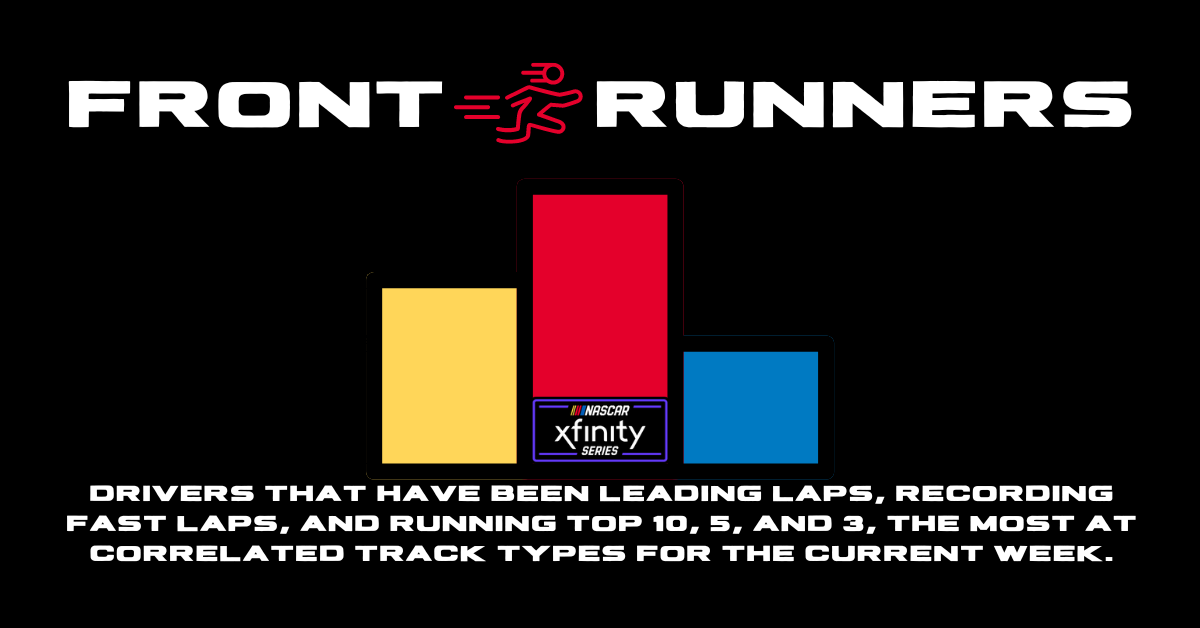Front Runners highlights the drivers that lead laps, run fast laps, and run inside the top 10, 5, & 3 the most at correlated track types. If you want a more detailed overview of how the data in Front Runners is organized and what it means, check out this Front Runners Tutorial Video. There is also a short written overview below.
This week the Xfinity Series will make its first of two stops for the season at Phoenix Raceway. Check out the Cup Series article on Phoenix to see why I’ve selected the tracks that I have for this week.
Drivers who have no starts at the selected tracks in the Xfinity Series, Aric Almirola, Corey Heim, Frankie Muniz, Hailie Deegan, Jesse Love, Nick Leitz, and Shane Van Gisbergen, over the relevant time period are omitted from the tables below.
Front Runners Breakdown
The charts below are sorted by percentage of laps led by default. There are also a few more columns that you can choose to display but for ease of display those columns are hidden by default. First, some notes on the data:
- How percentages are calculated:
- For laps in the Top 10, 5, 3, and led, the calculation is laps that driver completed in those positions divided by laps that driver has completed.
- For fastest laps the calculation is fast laps recorded by the driver divided by all fast laps in the data set. Unfortunately its just super complicated to calculate how many fast laps were available while the driver was still running.
- For laps run the calculation is laps completed by the driver divided by all laps possible in the data set.
- Average running position is weighted by how much of a race the driver completed. So a driver completing 50% of one race with an average running position of 5 and 100% of a second race with an average running position of 15, will have a calculated average running position of 11.67, not 10, because the second race has twice as much weight.
- Fin-Start takes the average finishing position of a driver and subtracts the driver’s average starting position from it. Negative numbers mean a driver has improved from the start, positive numbers mean the driver’s finishing position is worse than their starting position.
- Fin-ARP take the the average finishing position of a driver and subtracts the driver’s average running position from it. As with Fin-Start, negative numbers show finishes better than average running position, while positive numbers show finishes worse than the driver’s average running position. In effect, positive numbers mean a driver has been unlucky, negative numbers suggest a driver has been lucky.
Phoenix, Richmond, and New Hampshire in 2023
Las Vegas and Kansas in 2023Phoenix, Richmond, and New Hampshire in 2022 and 2023
Front Runners are great to compare with our other Advanced Analytics. Check out our Pre-Practice/Qualifying Ranks, and Sim Center as well!
Thank you all for taking the time to look at this. Let’s WIN THE RACE !

